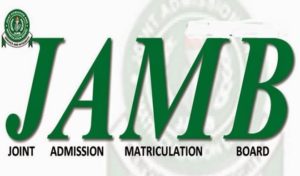Solutions to jamb mathematics sequences and series questions: Jamb mathematics tutorial
Hi guys. Today on jamb mathematics tutorials, we’ll be taking a look at some selected jamb past questions on sequences and series and providing solutions to such questions. Feel free to drop any question giving you tough time on the comment section.
I’ll advice you exhaust this topic before going through these questions for easier understanding. You can read the article explaining the sequences and series in full here. Then come back and practice. Good luck.
For the best guide in your studies and mathematics tutorials with videos, visit ogschools.com
1993-23: If k+1,2k-1,3k+1 are three consecutive terms of a geometric progression, find the possible values of the common ratio.
Solution
r=\frac{2k-1}{k+1}=\frac{3k+1}{2k-1}\\\frac{2k-1}{k+1}=\frac{3k+1}{2k-1}\\(2k-1)(2k-1)=(3k+1)(k+1)\\4k^2-2k-2k+1=3k^2+3k+k+1\\4k^2-4k+1=3k^2+4k+1\\k^2-8k=0\\k(k-8)=0\\k=0 or k-8=0\\k=0 or k=8
substitute k=0 or k=8 into r=\frac{2k-1}{k+1}
K=0, r=\frac{-1}{1}=-1
if k=8, r=\frac{16-1}{8+1}=\frac{15}{9}=\frac{5}{3}\\\therefore r=-1, \frac{5}{3}
1994-19: If the 6th term of an arithmetic progression is 11 and the first term is 1, find the common difference
Solution
a=1\cdots eq(i)
a+5d=11\cdots eq(ii)
substitute a=1 into eq(ii)
1+5d=11\\5d=10\\d=2
1995-17: The 4_{th} term of an A.P is 13 while the 10_{th} term is 31. Find the 21_{st} term.
Solution
a+3d=13\cdots eq(i)
a+9d=31\cdots eq(ii)
Subtract eq(i) from eq(ii)
6d=18\\d=3substitute d=3 into eq(i)
a+3(3)=13\\a+9=13\\a=4\\U_{21}=a+20d\\U_{21}=4+20(3)\\U_{21}=64
1995-23: Find the sum to infinity of the following sequence 1,\frac{9}{10},(\frac{9}{10})^2,(\frac{9}{10})^3.
Solution
a=1\cdotseq(i)
ar=\frac{9}{10}\cdotseq(ii)
divide eq(ii) by eq(i)
r=\frac{9}{10}\\S_{\infty}=\frac{a}{1-r}\\S_{\infty}=\frac{1}{1-\frac{9}{10}}\\S_{\infty}=\frac{1}{\frac{1}{10}}\\S_{\infty}=10
1997-20: The n_{th} term of a sequence is given by 3^{1-n}. Find the sum of the first three terms of the sequence.
Solution
U_{n}=3^{1-n}\\U_{1}=3^{1-1}=3^0=1\\U_{2}=3^{1-2}=3^{-1}=\frac{1}{3}\\U_{3}=3^{1-3}=3^{-2}=\frac{1}{9}\\S_{3}=U_{1}+U_{2}+U_{3}\\S_{3}=1+\frac{1}{3}+\frac{1}{9}\\S_{3}=\frac{13}{9}=1\frac{4}{9}
1998-19: If p+1,2p-10,1-4p^2 are three consecutive terms of an arithmetic progression, find the possible values of p.
Solution
d=(2p-10)-(p+1)=(1-4p^2)-(2p-10)\\(2p-10)-(p+1)=(1-4p^2)-(2p-10)\\2p-10-p-1=1-4p^2-2p+10\\p-11=11-4p^2-2p\\4p^2+3p-22=0\\(4p^2+11p)-(8p+22)=0\\p(4p+11)-2(4p+11)=0\\(p-2)(4p+11)=0\\p-2=0 or 4p+11=0\\p=2 or p=\frac{-11}{4}
1998-20: The sum of the first three terms of a geometric progression is half its sum to infinity. Find the possible common ratio of the progression.
Solution
S_{3}=\frac{a(1-r^3)}{1-r}\\S_{\infty}=\frac{a}{1-r}\\S_{3}=\frac{S_{\infty}}{2}\\\frac{a(1-r^3)}{1-r}=\frac{1}{2}(\frac{a}{1-r})\\2(1-r^3)=1\\(1-r)^3=\frac{1}{2}\\r^3=\frac{1}{2}\\r=\frac{1}{\sqrt[3]{2}}
1978-27}: In a geometric progression, the first term is 153 and the sixth term is \frac{17}{27}. The sum of the first four terms is?
Solution
a=153\cdots eq(i)
ar^5=\frac{17}{27}\cdots eq(i)
dividing eq(ii) by eq(i)
\frac{ar^5}{a}=\frac{\frac{17}{27}}{153}\\r^5=\frac{1}{243}\\r=(\frac{1}{243})^{\frac{1}{5}}\\r=\frac{1}{3}\\S_{n}=\frac{a(1-r^n)}{1-r}\\S_{4}=\frac{153(1-(\frac{1}{3})^4)}{1-\frac{1}{3}}\\S_{4}=\frac{153(1-\frac{1}{81})}{\frac{2}{3}}\\S_{4}=\frac{153\times 3\times \frac{80}{81}}{2}\\S_{4}=\frac{680}{3}
1978-28: An arithmetic progression has first term as 11 and fourth term as 32. The sum of the first nine terms is?
Solution
a=11\cdots eq(i)
a+3d=32\cdots eq(ii)
substitute a=11 into eq(ii)
11+3d=32\\3d=21\\d=7\\S_{n}=\frac{n}{2}(2a+(n-1)d)\\S_{9}=\frac{9}{2}(2(11)+(9-1)7)\\S_{9}=4\cdot5(22+8\times7)\\S_{9}=4\cdot5(22+56)\\S_{9}=4\cdot5(78)\\S_{9}=351
1981-38: The first term of an arithmetic progression is 3 and the fifth term is 9. Find the number of terms in the progression if the sum is 81.
Solution
a=3\cdots eq(i)
a+4d=9\cdots eq(ii)
substitute a=3 into eq(ii)
3+4d=9\\4d=6\\d=\frac{3}{2}\\S_{n}=\frac{n}{2}(2a+(n-1)d)\\S_{n}=81\\81=\frac{n}{2}(2(3)+(n-1)\frac{3}{2})\\162=n(6+1\cdot5(n-1))\\162=6n+1\cdot5n^2-1\cdot5ndivide through by 1\cdot5\\108=4n+n^2-n\\n^2+3n-108=0\\n^2 +12n-9n-108=0\\(n^2+12n)-(9n+108)=0\\n(n+12)-9(n+12)=0\\(n+12)(n-9)=0\\n+12=0, or n-9=0\\n=-12, or n=9
since the number of terms cannot be negative
n=9
{1987-29}: Find the sum of the first 21 terms of the progression -10,-8,-6,\ldots
Solution
from the progression, a=-10, d=-8-(-10)=2\\S_{n}=\frac{n}{2}(2a+(n-1)d)\\S_{21}=\frac{21}{2}(2(-10)+(21-1)2)\\S_{21}=10\cdot5(-20+(20)2)\\S_{21}=10\cdot5(-20+40)\\S_{21}=10\cdot5(20)\\S_{21}=210
1987-30}: Find the eleventh term of the progression 4,8,16,\cdots
Solution
a=4\\r=\frac{8}{4}=2eleventh term =ar^{10}\\4\times2^{10}\\2^2\times2^{10}\\2^{12}
1988-28: If the sum of the 8_{th} and 9_{th} term of an arithmetic progression is 72 and the fourth term is -6, find the common difference.
Solution
U_{8}=a+7d, U_{9}=a+8d\\a+7d+a+8d=72\\2a+15d=72\cdots eq(i)
U_{4}=a+3d\\a+3d=-6\cdots eq(ii)
from eq(ii), a=-6-3d
substitute a=-6-3d into eq(i)
2(-6-3d)+15d=72\\-12-6d+15d=72\\9d=84\\d=9\frac{1}{3}
1991-29: Find the sum of the 20 terms in an arithmetic progression whose first term is 7 and last term is 117
Solution
a=7\\l=117 (where l is the last term)
n=20\\S_{n}=\frac{n}{2}(a+l)\\S_{20}=\frac{20}{2}(7+117)\\S_{20}=10(124)\\S_{20}=1240
1992-18: Find the sum to infinity of the following series 3+2+\frac{4}{3}+\frac{8}{9}+\frac{16}{27}+\ldots
Solution
S_{\infty}=\frac{a}{1-r}\\a=3\cdotseq(i)
ar=2\cdotseq(ii)
substitute a=3 into eq(ii)
3r=2\\r=\frac{2}{3}\\S_{\infty}=\frac{3}{1-\frac{2}{3}}\\S_{\infty}=\frac{3}{\frac{1}{3}}\\S_{\infty}=9
1992-20: For an arithmetic sequence, the first term is 2 and the common difference is 3. Find the sum of the first 11 terms.
Solution
a=2\\d=3\\S_{n}=\frac{n}{2}(2a+(n-1)d)\\S_{11}=\frac{11}{2}(2(2)+(11-1)3)\\S_{11}=\frac{11}{2}(4+(10)3)\\S_{11}=\frac{11}{2}(4+30)\\S_{11}=\frac{11}{2}(34)\\S_{11}=187
1988-29: If 7 and 189 are the first and fourth terms of a geometric progression respectively, find the sum of the first three terms of the progression.
Solution
a=7\cdots eq(i)
ar^3=189\cdots eq(ii)
divide eq(ii) by eq(i)
r^3=27\\r=3\\S_{n}=\frac{a(r^n-1)}{r-1}\\S_{3}=\frac{7(3^3-1)}{3-1}\\S_{3}=\frac{7(26)}{2}\\S_{3}=91
{1989-30}: If -8,m,n,19 are in arithmetic progression, find (m,n)
Solution
a=-8\\d=m-(-8)=n-m=19-n\\d=m+8=n-m=19-n\\m+8=n-m\\2m=n-8\\2m-n=-8\cdots eq(i)
m+8=19-n\\m+n=11\cdots eq(ii)
adding eq(i) to eq(ii)
3m=3\\m=1substitute m=1 into eq(ii)
1+n=11\\n=10\\\therefore m=1,n=10
1990-27: Find the sum of the first twenty terms of the arithmetic progression \log{a},\log{a^2},\log{a^3},\ldots
Solution
a=\log a\cdots eq(i)
a+d=\log{a^2}\cdots eq(ii)
substitute a=\log a into eq(ii)
\log{a}+d=\log{a^2}\\d=\log{a^2}-\log{a}\\d=\log{\frac{a^2}{2}}\\d=log{a}\\S_{n}=\frac{n}{2}(2a+(n-1)d)\\S_{20}=\frac{20}{2}(2\log a+(20-1)\log a)\\S_{20}=10(2\log a+19\log a)\\S_{20}=10(21\log a)\\S_{20}=210\log a\\S_{20}=\log {a^{210}}
1999-17}: The first term of a geometric progression is twice its common ratio. Find the sum of the first two terms of the progression if its sum to infinity is 8
Solution
a=2r\\S_{\infty}=\frac{a}{1-r}substitute a=21 into S_{\infty}\\S_{\infty}=\frac{2r}{1-r}\\8=\frac{2r}{1-r}\\8(1-r)=2r\\8-8r=2r\\10r=8\\r=\frac{8}{10}=\frac{4}{5}\\\therefore a=2(\frac{4}{5})=\frac{8}{5}\\S_{2}=\frac{a(1-r^2)}{1-r}\\S_{2}=\frac{\frac{8}{5}(1-(\frac{4}{5})^2)}{1-\frac{4}{5}}\\S_{2}=\frac{\frac{8}{5}(1-(\frac{16}{25}))}{\frac{1}{5}}\\S_{2}=\frac{\frac{8}{5}(\frac{9}{25})}{\frac{1}{5}}\\S_{2}=\frac{72}{25}=2\frac{22}{25}
2000-20}: The third term of an A.P is 4x-2y and the 9_{th} term is 1ox-8y. Find the common difference.
Solution
a+2d=4x-2y\cdots eq(i)
a+8d=10x-8y\cdots eq(ii)
subtract eq(i) from eq(ii)
6d=(10x-8y)-(4x-2y)\\6d=10x-8y-4x+2y\\d=x-y
2001-10: The sixth term of an arithmetic progression is half of its twelfth term. The first term is equal to ?
Solution
a+5d=\frac{1}{2}(a+11d)\\2(a+5d)=a+11d\\2a+10d=a+11d\\a=d
2002-29: If the 9th term of an A.P is five times the 5th term, find the relationship between a and d.
Solution
a+8d=5(a+4d)\\a+8d=5a+20d\\4a+12d=0\\a+3d=0
2003-16: Three consecutive terms of a geometric progression are given as n-2,n and n+3. Find the common ratio.
Solution
r=\frac{n}{n-2}=\frac{n+3}{n}\\\frac{n}{n-2}=\frac{n+3}{n}\\n^2=(n-2)(n+3)\\n^2=n^2+3n-2n-6\\n^2=n^2+n-6\\n-6=0\\n=6\\r=\frac{n}{n-2}\\r=\frac{6}{6-2}\\r=\frac{6}{4}=\frac{3}{2}=1\frac{1}{2}
2003-21: The sum of the first n terms of an arithmetic progression is 252. If the first term is -16 and the last term is 72, find the number of terms in the series
Solution
S_{n}=252\\a=-16\\l=72\\S_{n}=\frac{n}{2}(a+l)\\252=\frac{n}{2}(-16+72)\\504=n(56)\\n=9
2004-18: The n_{th} term of two sequences are Q_{n}=3\cdot2^{n-2} and U_{m}=3\cdot2^{2m-3}. Find the product of Q_{2} and U_{2}.
Solution
Q_{n}=3\cdot2^{n-2}\\Q_{2}=3\cdot2^{2-2}\\Q_{2}=3\cdot2^{0}\\Q_{2}=3\\U_{m}=3\cdot2^{2m-3}\\U_{2}=3\cdot2^{2(2)-3}\\U_{2}=3\cdot2^{4-3}\\U_{2}=3\cdot2^{1}\\U_{2}=6\\Q_{2}U_{2}=3\times6\\Q_{2}U_{2}=18
That’s the much we can take on this. If you have any question on this topic or related to mathematics, feel free to use the comment session. Be rest assured, there are mathematicians here. Also, notify us if you see any errors in the solutions above. Kindly share.
Other jamb mathematics tutorials
Jamb mathematics tutorial: Indices, Logarithms, and Surds
Jamb mathematics tutorial: FRACTIONS, DECIMALS, APPROXIMATION AND PERCENTAGES
Solutions to jamb mathematics variation questions
Solutions to jamb mathematics number bases questions
Solutions to jamb mathematics FRACTIONS, DECIMALS, APPROXIMATION AND PERCENTAGES questions
Solutions to jamb mathematics binary operations
Solutions to jamb mathematics indices, logarithms, and surds questions
Solutions to jamb mathematics coordinate geometry questions
Jamb mathematics tutorial: sequences and series

[…] However, for those who feel they have completely exhausted this topic, click here to see tough questions on sequences and series […]